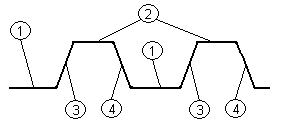Digital signal facts for kids
Digital signal can mean two different things:
Discrete-time signals
Digital signals are digital representations of discrete-time signals, which are often produced by changing an analog signal.
An analog signal is a datum that changes over time (for instance the temperature at a given place; the depth of a certain point in a pond; or the amplitude of the voltage at some node in a circuit). A discrete-time signal is a sampled version of an analog signal: the value of the datum is noted at fixed intervals (for example, every microsecond) rather than continuously.
In short, a digital signal is a quantized discrete-time signal; a discrete-time signal is a sampled analog signal.
In the digital revolution the usage of digital signals has increased significantly. Many modern media devices, especially the ones that connect with computers use digital signals to represent signals that were traditionally represented as analog signals; cell phones, music and video players, personal video recorders, and digital cameras are examples.
In most applications, digital signals are represented as binary numbers, so their precision of quantization is measured in bits.
Waveforms in digital systems
In computer architecture and other digital systems, a waveform that switches between two voltage levels representing the two states of a Boolean value (0 and 1) is referred to as a digital signal.
The clock signal is a special digital signal that is used to synchronize digital circuits. The image shown can be considered the waveform of a clock signal. Logic changes are triggered either by the rising edge or the falling edge.
Images for kids
-
A frequency-shift keying (FSK) signal is alternating between two waveforms and allows passband transmission. It is considered a means of digital data transmission.
See also
 In Spanish: Señal digital para niños
In Spanish: Señal digital para niños



